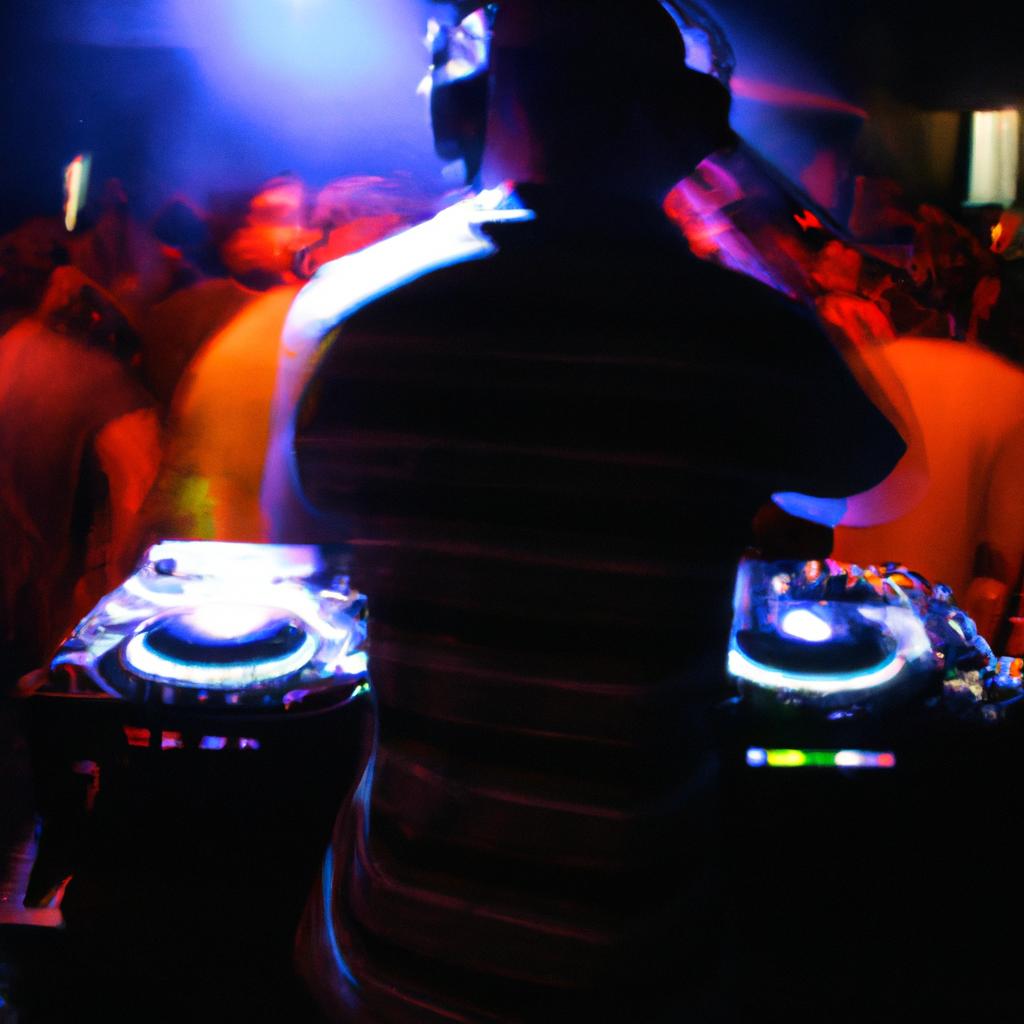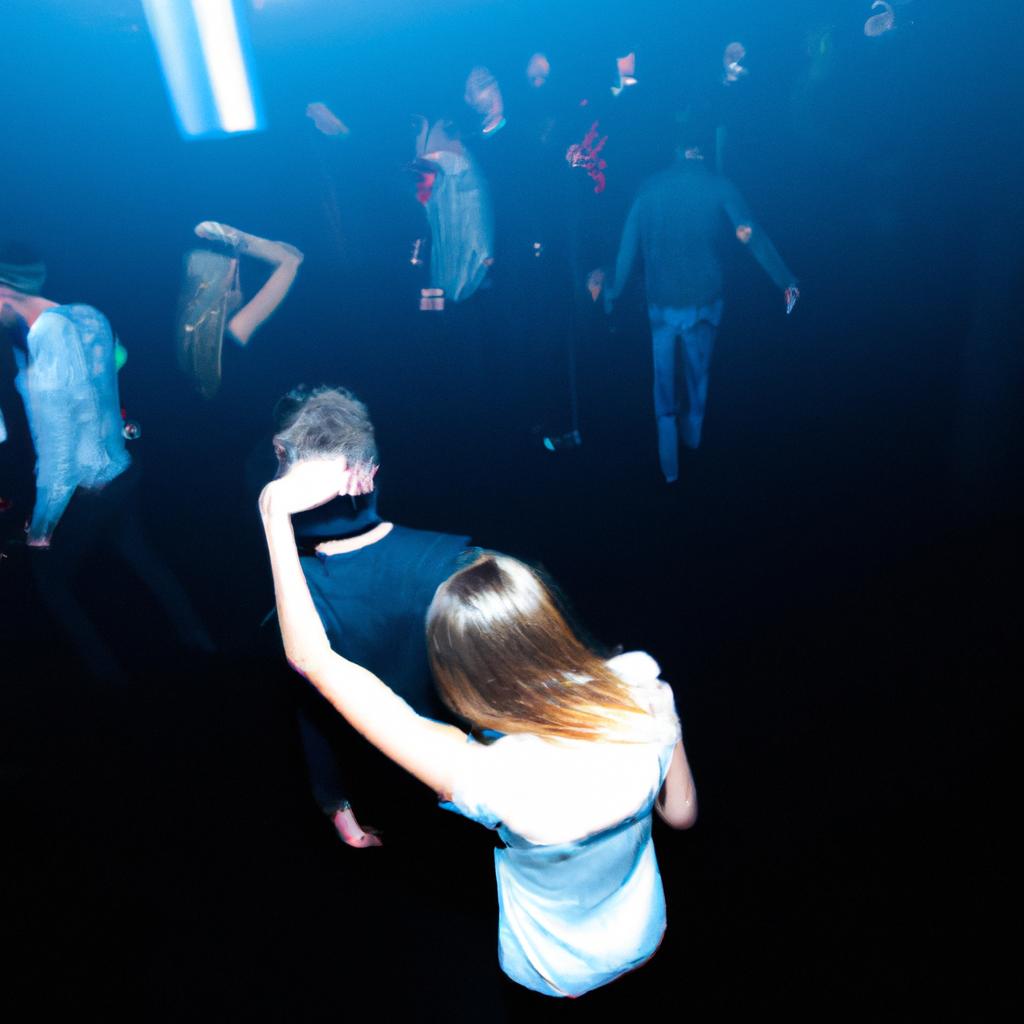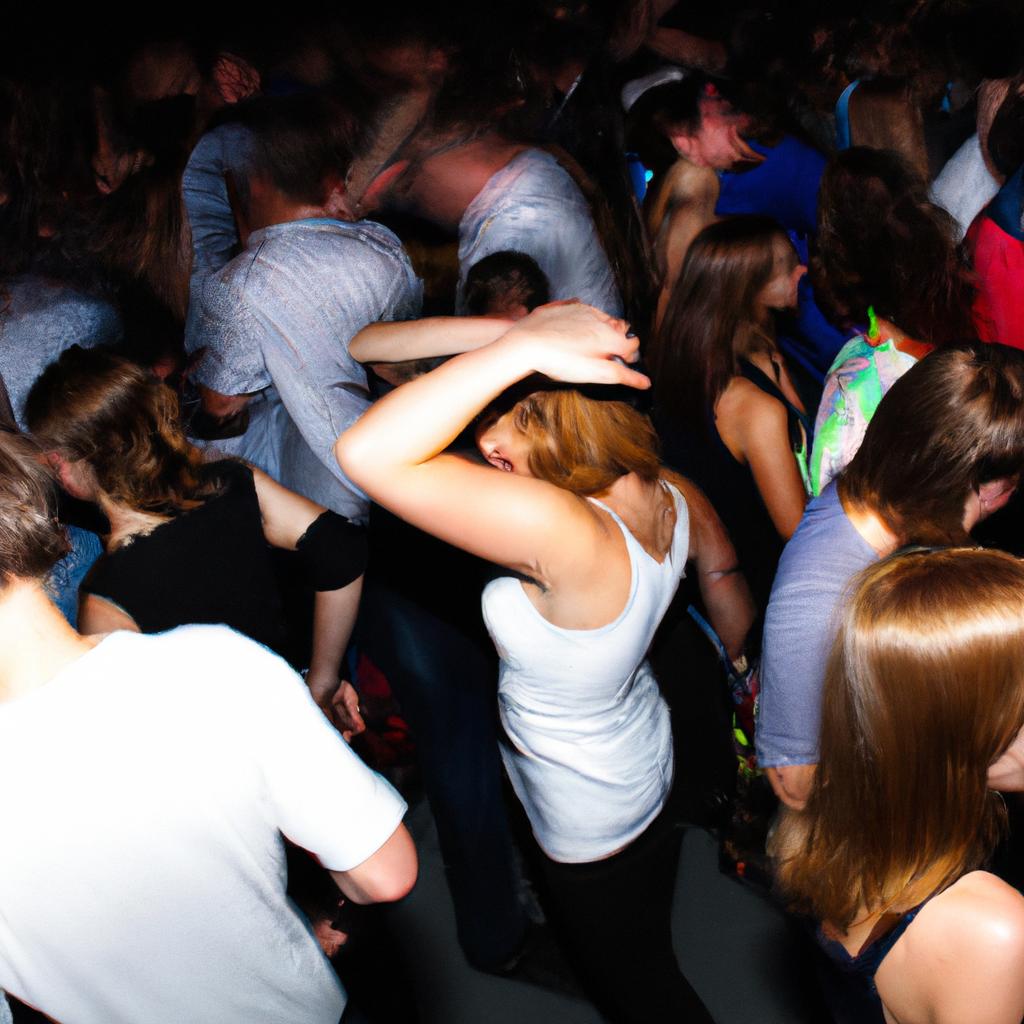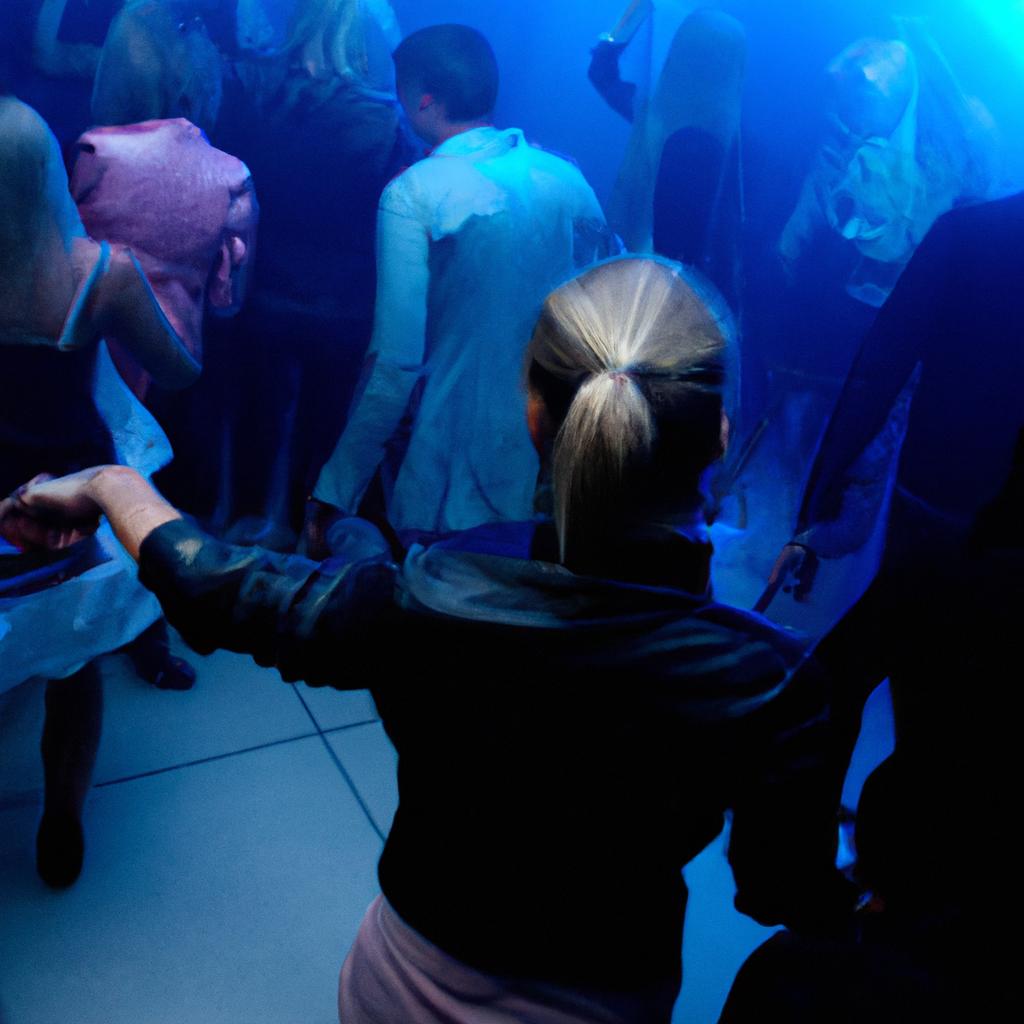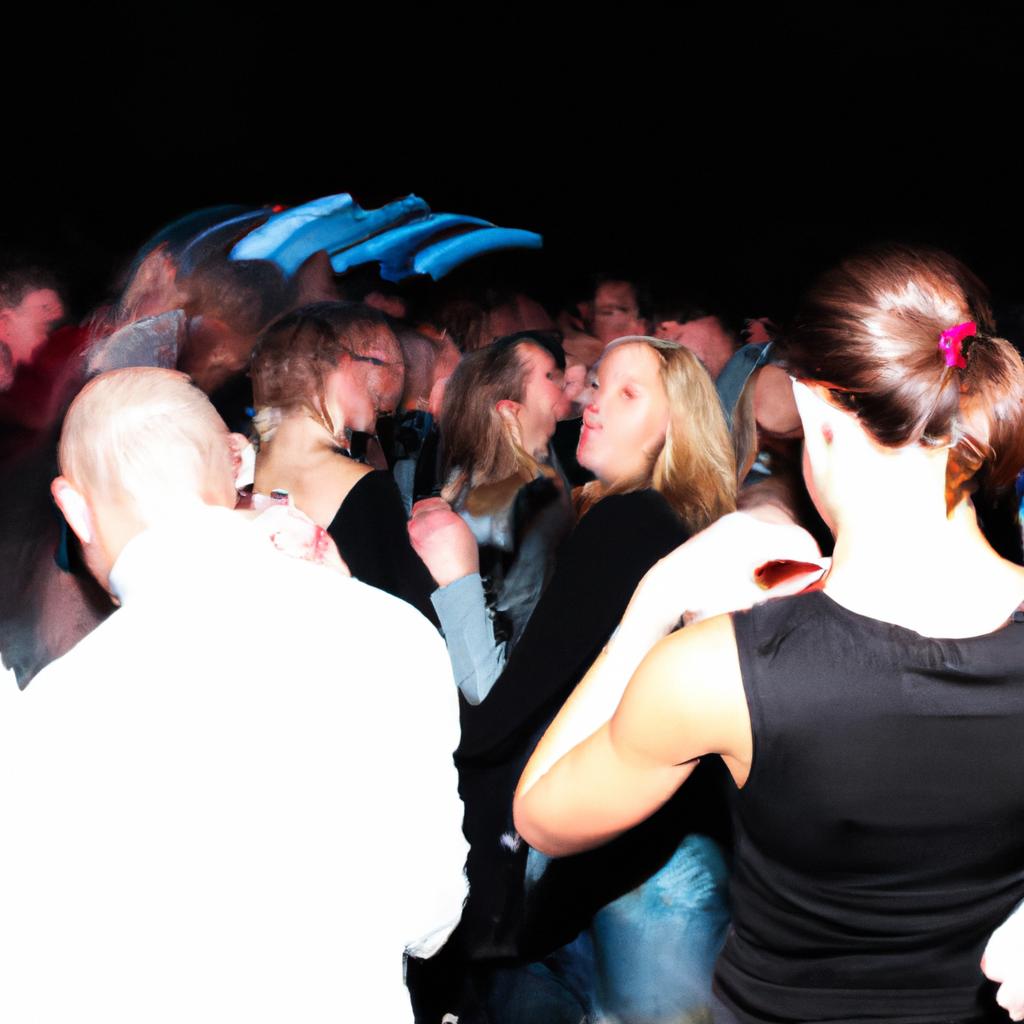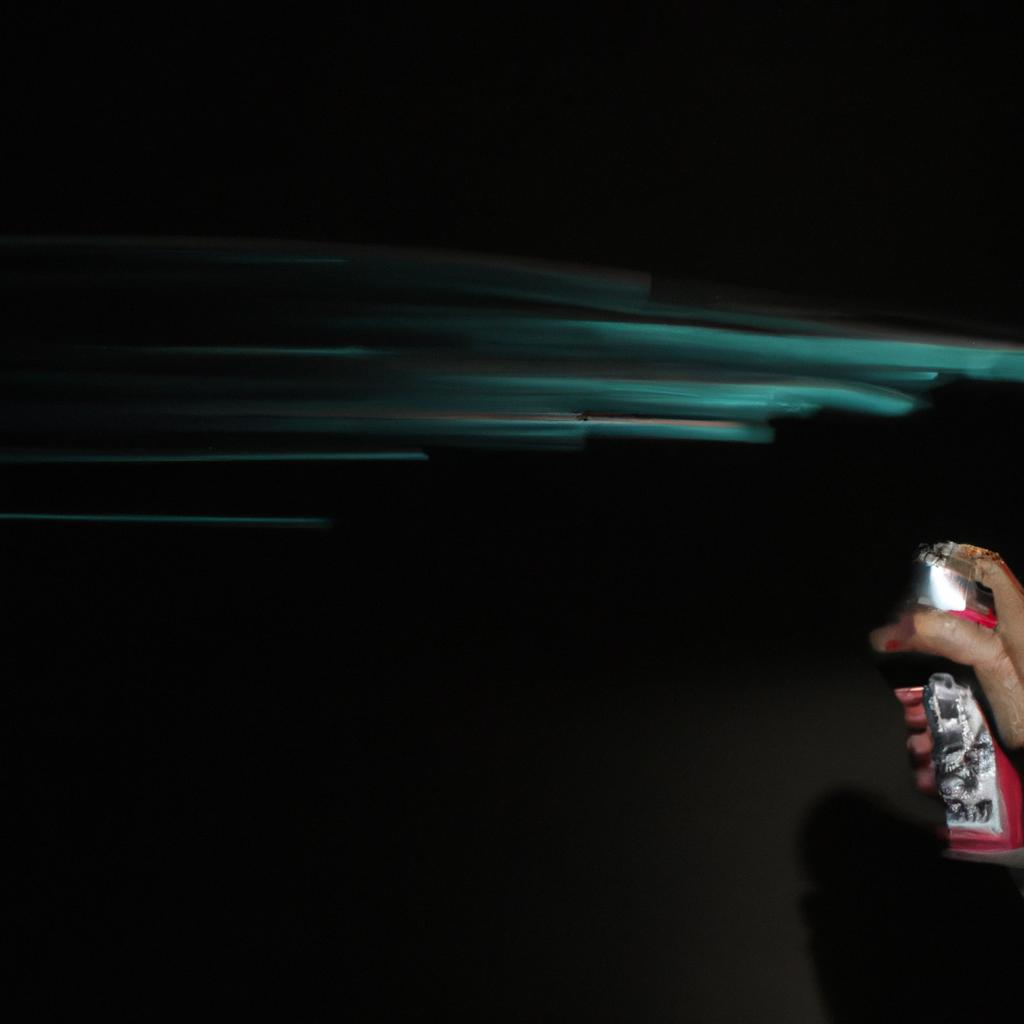Nightclub Dress Code: Essential Guidelines for Dance Clubs
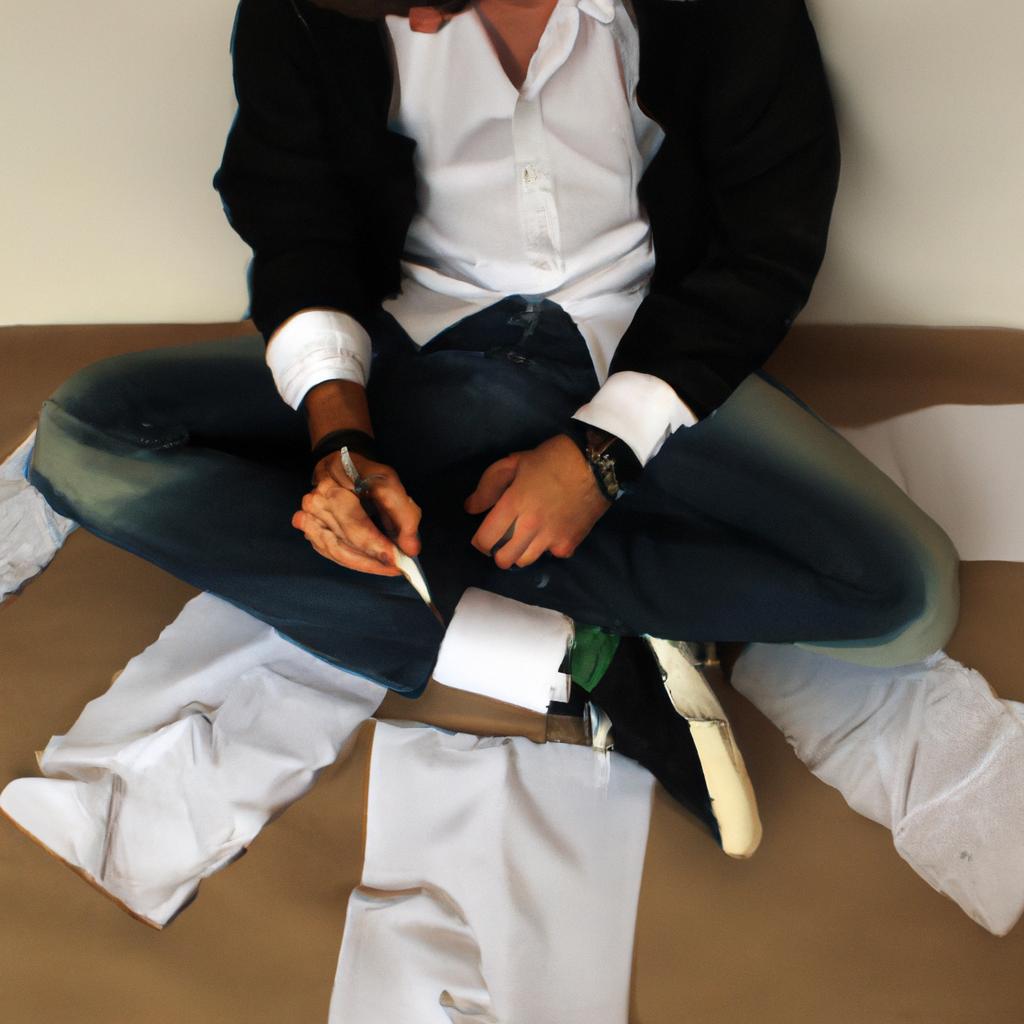
Nightclubs have long been regarded as a space where individuals can express themselves through music, dance, and fashion. However, the atmosphere of a nightclub is often governed by specific dress codes that aim to maintain a certain level of decorum and create an inclusive environment for all patrons. For instance, imagine a popular dance club in the heart of a bustling city. On any given night, this venue attracts a diverse range of party-goers – from stylish millennials looking to unwind after a busy week to tourists seeking an unforgettable nightlife experience. In order to ensure that everyone feels comfortable and adheres to the established norms, it becomes crucial for both club owners and attendees alike to understand and follow the essential guidelines when it comes to nightclub dress codes.
The implementation of dress codes within nightclubs serves various purposes beyond mere aesthetics. These guidelines help establish an appropriate ambiance within the establishment while also ensuring safety and security for all guests. By setting clear expectations regarding attire, clubs can prevent potential conflicts or misunderstandings among visitors with different backgrounds and preferences. Moreover, enforcing such rules allows clubs to cultivate their desired image and attract clientele who align with their intended brand identity. Thus, understanding these essential guidelines becomes vital not only for individual club-goers but also for those who operate such establishments and want to create an enjoyable and inclusive experience for their patrons.
Nightclub dress codes can vary depending on the venue, location, and theme of the establishment. However, there are some common guidelines that tend to be universal. These guidelines often include restrictions on certain types of clothing and accessories, such as athletic wear, excessively baggy or revealing outfits, sandals or flip-flops, and hats or headgear. Additionally, many clubs have rules against wearing offensive or derogatory attire that could potentially offend other guests.
To better understand and follow nightclub dress codes, it is advisable for individuals to familiarize themselves with the specific requirements of the club they plan to visit. This information can typically be found on the club’s website or by contacting them directly. By adhering to these guidelines, attendees can ensure a smooth entry into the establishment without any issues.
It is important to note that while dress codes aim to maintain a certain level of decorum, they should not be discriminatory or exclusive. Nightclubs should strive to create an inclusive environment where people from all walks of life feel welcome and comfortable expressing themselves. Club owners should regularly review and update their dress code policies to ensure they align with modern sensibilities and promote diversity and inclusivity.
In conclusion, understanding and following nightclub dress codes is essential for both club-goers and club owners alike. By adhering to these guidelines, individuals can contribute to creating a safe and inclusive atmosphere within nightclubs while also enjoying a memorable nightlife experience.
Appropriate attire for men
Appropriate Attire for Men
Imagine this scenario: Jake, a young man in his early twenties, is excitedly preparing for a night out at the hottest dance club in town. As he stands before his closet, he wonders what would be considered appropriate attire for such an occasion. The way he dresses will not only reflect his personal style but also determine whether he gains entry into the club and feels comfortable amidst the pulsating beats of music and energetic crowd.
To help men like Jake navigate the often perplexing world of nightclub dress codes, here are some essential guidelines to consider:
-
Dress smart-casual: Most dance clubs have a smart-casual dress code that strikes a balance between casual comfort and stylish sophistication. This means avoiding overly formal attire like suits or tuxedos while steering clear of excessively casual outfits such as shorts or flip-flops. Opt instead for well-fitted jeans or trousers paired with a button-down shirt or collared polo shirt. Adding a blazer can elevate the look further, giving it a touch of refinement without being too formal.
-
Pay attention to footwear: Shoes play a crucial role in completing any outfit, especially when it comes to nightclub attire. Sneakers may be acceptable if they are clean and presentable, but more often than not, it’s advisable to wear leather shoes or fashionable boots that complement your overall ensemble. Not only do these choices enhance your appearance; they also provide better support and protection for your feet during hours spent on the dance floor.
-
Accessorize thoughtfully: While accessories should never overpower your outfit, tasteful additions can make you stand out from the crowd. Consider incorporating simple yet stylish elements such as watches, bracelets, or necklaces that suit your personal taste and match the overall aesthetic you aim to achieve.
-
Practice good grooming habits: In addition to clothing choices, maintaining proper grooming standards is equally important when attending a dance club. Pay attention to details like having a clean-shaven or well-groomed beard, neatly styled hair, and trimmed nails. These minor but significant aspects contribute to an overall polished appearance that is more likely to be in line with the nightclub’s dress code.
By adhering to these guidelines, men can confidently step into any dance club knowing they are dressed appropriately for the occasion. As we move forward into discussing appropriate attire for women, it is important to remember that each gender has its own unique considerations when it comes to dressing up for a night of dancing and socializing.
Appropriate attire for women
Appropriate Attire for Women
Having discussed the guidelines for men’s attire, let us now turn our attention to appropriate clothing choices for women when visiting dance clubs. To illustrate this section, let us consider a case study of Jane, a young professional who decides to go out with her friends to celebrate an exciting promotion.
When it comes to dressing appropriately for a nightclub, women have more flexibility in their outfit choices compared to men. However, it is important to strike a balance between style and appropriateness. Revealing too much skin or wearing overly casual clothes may not be suitable for certain establishments. For instance, Jane opts for a stylish knee-length dress that accentuates her figure without being too revealing. This choice ensures she looks fashionable while still adhering to the nightclub’s dress code.
To further guide you in making suitable attire choices, here are some essential tips:
- Avoid wearing athletic wear such as gym shorts or running shoes; these items are better suited for fitness activities rather than clubbing.
- Opt for dresses or skirts that fall at least mid-thigh length – anything shorter might infringe upon the establishment’s policy on modesty.
- Consider incorporating trendy accessories like statement earrings or bold necklaces to enhance your overall look.
- Choose footwear wisely – opt for heels or dressy sandals instead of sneakers or flip-flops which can give off a more casual vibe.
Let us now delve deeper into understanding the appropriate footwear guidelines when it comes to attending dance clubs. By following these suggestions, you will ensure that your outfit meets the standards set by most nightclubs without compromising on personal style and comfort. So lace up those dancing shoes and get ready to hit the dance floor!
[Table]
| Dress Code Tips: Appropriate Attire for Women |
|---|
| 1 |
| 2 |
| 3 |
| 4 |
In the subsequent section on “Footwear Guidelines,” we will explore the importance of appropriate shoe choices and how they contribute to both style and comfort. So let us take a step forward into understanding what shoes are suitable for a night of dancing.
Footwear guidelines
Section H2: Footwear Guidelines
After considering appropriate attire for women in dance clubs, it is crucial to also address the significance of footwear. The right choice of shoes not only complements one’s outfit but also ensures comfort and safety on the dance floor.
To illustrate this point, let’s consider a hypothetical scenario: Emily, an enthusiastic club-goer, decides to wear high heels with her trendy dress as she heads out for a night of dancing. As the night progresses, Emily starts experiencing discomfort due to her ill-suited footwear. In order to continue enjoying herself without any hindrances or potential injuries, she realizes the importance of adhering to proper footwear guidelines outlined by dance clubs.
When it comes to choosing suitable shoes for a nightclub setting, keep in mind the following considerations:
- Comfort: Opt for shoes that provide adequate support and cushioning to avoid foot fatigue during extended periods of dancing.
- Stability: Select shoes with sturdy soles that offer good traction and minimize the risk of slipping or tripping on crowded dance floors.
- Style: Find footwear options that align with your personal style while still meeting the requirements set forth by the establishment you plan to visit.
- Versatility: Consider versatile shoe styles that can be worn comfortably throughout the evening rather than having to bring multiple pairs.
In addition to these pointers, referring back to our previous discussion on appropriate attire for women in nightclubs may help guide your choice further. To summarize both sections effectively, we have created a table below outlining suitable combinations of outfits and corresponding recommended shoe types:
| Outfit | Recommended Shoes |
|---|---|
| Little black dress | Classic pumps |
| Jeans and top | Ankle boots |
| Romper or jumpsuit | Strappy sandals |
| Skirt and blouse | Block-heeled mules |
By carefully considering these suggestions based on popular outfit choices at dance clubs, individuals can confidently select appropriate footwear that not only complements their attire but also ensures a comfortable and enjoyable experience on the dance floor.
Transitioning seamlessly into our next section about prohibited clothing and accessories, it is essential to be aware of items that are not allowed in nightclubs. By understanding what’s off-limits, you can avoid any potential issues or conflicts while enjoying your time at these establishments.
Prohibited clothing and accessories
Section H2: Prohibited clothing and accessories
After familiarizing yourself with the footwear guidelines for dance clubs, it is important to be aware of the prohibited clothing and accessories that are not allowed in most nightclubs. Understanding these restrictions will help ensure that you adhere to the dress code and have a smooth entry into the venue.
To illustrate the importance of adhering to these guidelines, let’s consider a hypothetical scenario. Imagine a young woman named Sarah who eagerly prepares herself for a night out at a popular dance club. She arrives wearing her favorite band t-shirt, ripped jeans, and sneakers – an outfit she feels comfortable in and believes suits her style perfectly. However, upon reaching the entrance, she is denied entry due to her attire violating the nightclub’s dress code policy.
In order to avoid such situations, here are some commonly prohibited items when attending dance clubs:
- Athletic wear: This includes gym shorts, sweatpants, track jackets, or any other sportswear designed primarily for exercise purposes.
- Offensive or explicit graphic designs: Clothing featuring offensive language or explicit images is generally not permitted as it can create an uncomfortable environment for others.
- Baggy clothing: Oversized shirts or pants that excessively sag below the waistline may pose safety concerns on crowded dance floors.
- Headgear: Hats, caps, visors, beanies, or any form of headwear might obstruct visibility or be considered disrespectful inside a nightclub setting.
It is worth noting that individual venues may have specific rules regarding what they consider acceptable or unacceptable attire. To provide further insight into this topic, refer to the table below which outlines examples of common prohibited clothing and accessories found in many dance clubs:
| Prohibited Items | Rationale |
|---|---|
| Flip-flops | Potential tripping hazard on busy floors |
| Hoodies | Obscures facial features; potential security risk |
| Excessive jewelry | Risk of theft or injury to self and others |
| Offensive costumes | Promotes cultural insensitivity |
By understanding the prohibited clothing and accessories, you can avoid potential embarrassment or disappointment at the nightclub entrance. Remember that adhering to these guidelines not only enhances your own experience but also ensures a respectful environment for all attendees.
Now that we have covered the footwear guidelines as well as the prohibited clothing and accessories, let’s move on to discussing the dress code for themed nights in dance clubs.
Dress code for themed nights
Transitioning from the previous section on prohibited clothing and accessories, it is important to note that while dance clubs often have general dress code guidelines, they also frequently host themed nights. These themed nights allow club-goers to embrace a specific style or era, creating an immersive experience. For instance, let’s consider the fictional case of Sarah who loves 80s music and decides to attend an “80s Flashback” night at her favorite nightclub.
Themed nights add excitement and variety to the usual club scene, encouraging attendees like Sarah to fully immerse themselves in the chosen theme. To ensure you’re appropriately dressed for these events, here are some essential elements to keep in mind:
-
Research the Theme: Before attending a themed night, take some time to research and understand what the theme entails. This will help you plan your outfit accordingly by incorporating appropriate colors, patterns, and accessories associated with that particular era or concept.
-
Attention to Detail: Pay attention to the small details when putting together your ensemble for a themed night. Consider adding statement pieces such as neon leg warmers or chunky jewelry for an ’80s-themed event. These details can elevate your overall look and make it more authentic.
-
Comfort Matters: While dressing up according to the theme is crucial, remember that comfort should not be compromised. Ensure that your chosen attire allows you freedom of movement so you can dance comfortably throughout the night.
To illustrate further how different themes may require varying styles of dress, refer to the following table showcasing popular themes alongside recommended outfits:
| Theme | Recommended Outfit |
|---|---|
| 1920s Speakeasy | Flapper-style dress with fringe detailing and a feathered headband |
| Tropical Paradise | Floral-print sundress paired with sandals and accessorized with a wide-brimmed hat |
| Hollywood Glamour | Elegant evening gown with sparkling jewelry and a faux fur stole |
| Futuristic | Metallic, form-fitting clothing paired with bold accessories and futuristic hairstyle |
As you can see from the table above, each theme has its own distinct style. By embracing these themes and dressing accordingly, you not only enhance your experience but also contribute to the overall ambiance of the event.
Understanding the importance of dressing appropriately for themed nights is essential for anyone planning to attend dance clubs. With knowledge of the theme, attention to detail in your outfit, and comfort as a priority, you are well-equipped to make the most out of these exciting events.
Transitioning into the subsequent section on “Tips for navigating dress codes,” it is crucial to consider additional factors that go beyond specific themes when preparing for a night at a dance club.
Tips for navigating dress codes
Dress code policies can vary significantly across different nightclubs, with some establishments implementing themed nights to add an extra layer of excitement. However, it is important for club-goers to familiarize themselves with the guidelines and expectations associated with these themed dress codes in order to avoid any potential inconveniences or disappointments.
For instance, let’s consider a hypothetical scenario where a dance club decides to host a 90s throwback night. The theme encourages guests to embrace the fashion trends popularized during that era, such as neon colors, oversized clothing, and platform shoes. By adhering to the suggested attire, attendees can fully immerse themselves in the nostalgic atmosphere and enhance their overall experience.
When navigating themed dress codes at dance clubs, keep in mind the following essential tips:
- Research beforehand: Before attending a themed night at a nightclub, take some time to research the specific dress code requirements associated with that particular event. This will help you understand what kind of outfit would be appropriate and ensure that you are adequately prepared.
- Accessorize strategically: Accessories play a crucial role when it comes to complementing your outfit for a themed night. Consider incorporating items like hats, sunglasses, jewelry, or even props that align with the chosen theme. These details can enhance your costume and contribute to an authentic representation of the desired era or concept.
- Be creative within limits: While it’s encouraged to embrace creativity and put together an eye-catching ensemble for a themed night, it’s important to respect any boundaries set by the nightclub regarding offensive or inappropriate costumes. Ensure that your outfit reflects both your personal style and respects others’ sensibilities.
- Confidence is key: Regardless of whether you choose to follow a theme closely or opt for a more subtle interpretation, confidence is vital. Embracing your chosen look wholeheartedly will not only make you feel more comfortable but also enable you to fully enjoy the vibrant ambiance of the nightclub.
| Theme | Attire Description | Example Outfit Suggestions |
|---|---|---|
| 80s Retro | Bright and bold colors, leg warmers, shoulder pads | Neon colored leggings, oversized shirt, fingerless gloves |
| Hawaiian Luau | Floral patterns, grass skirts | Flowy sundress with floral prints, leis |
| Masquerade Ball | Elegant masks and formal attire | Tuxedo or evening gown paired with a decorative mask |
| Western | Cowboy boots, denim jeans | Plaid shirt tucked into jeans with a belt buckle |
By familiarizing yourself with the expectations and possibilities associated with themed nights at dance clubs and adhering to their dress code guidelines, you can ensure an enjoyable experience that fully embraces the unique atmosphere created by each event.

